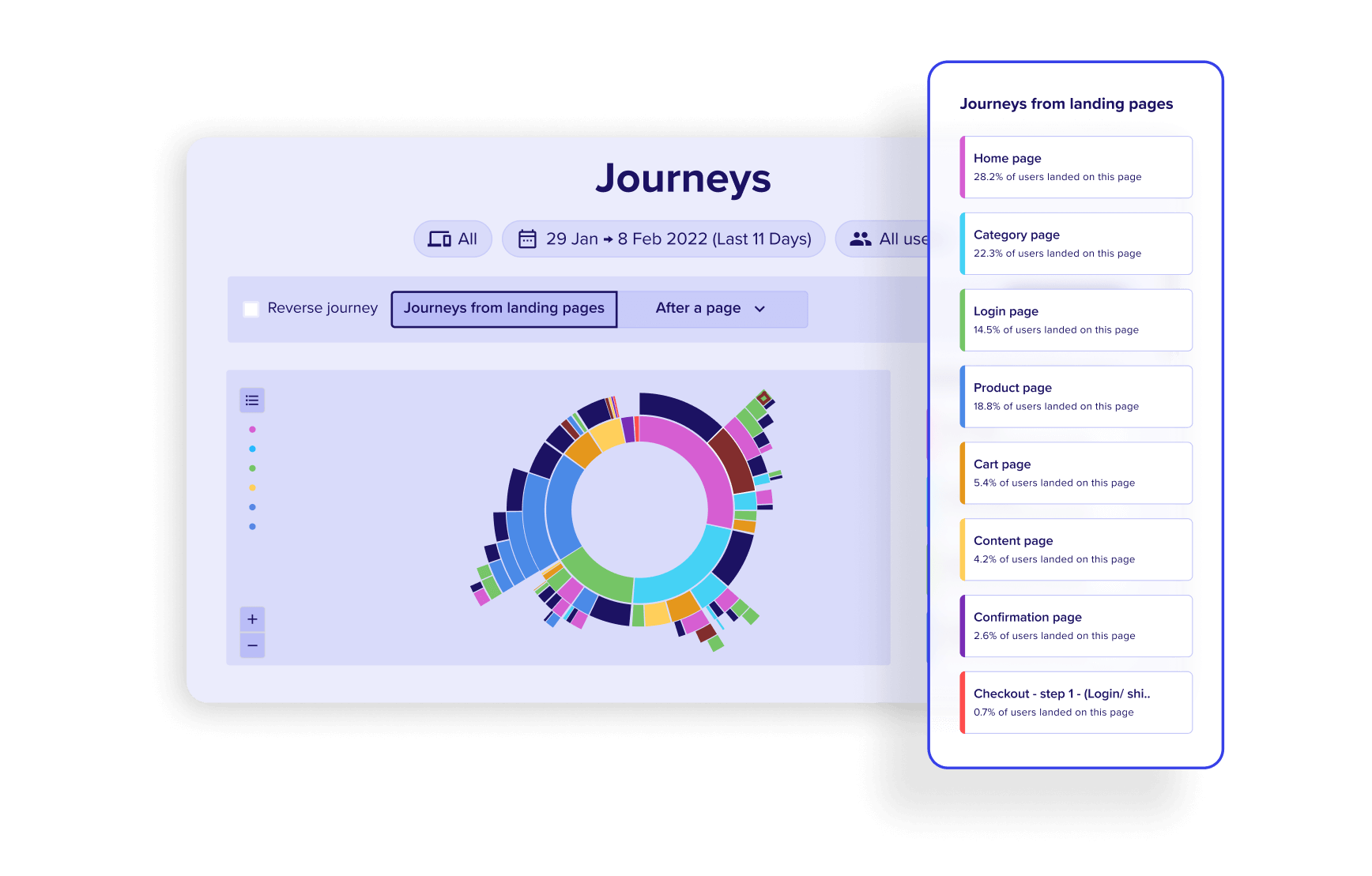
Intuitive visualizations of your customers journey.

Customer retention rate is a critical business strategy metric, directly linked to customer satisfaction and customer loyalty. This rate is a reflection of a company’s ability to maintain its customer database over a certain period. The calculation involves subtracting the number of new customers from the total number of customers at the end of the period. This result is then divided by the number of customers at the beginning of the period, providing a percentage that represents the customer retention rate.
A deep understanding of the customer retention rate can provide valuable insights into customer satisfaction levels, product or service quality, and overall business performance. A high customer retention rate signals that a company’s offerings meet or exceed customer expectations, fostering customer loyalty and repeat business. Conversely, a low customer retention rate may indicate issues with product or service quality, customer service, or other areas of the customer experience.
By closely monitoring the customer retention rate, businesses can pinpoint areas of improvement, devise strategies to enhance customer satisfaction and loyalty, and ultimately increase profitability. It’s worth noting that enhancing customer retention rate by merely 5% can amplify profits by 25% to 95%, as per research conducted by Bain & Company.
Customer retention rate is a vital performance indicator that gauges a company’s capacity to retain its customers throughout a specific customer lifecycle. This rate is calculated by dividing the number of customers at the end of a period (minus the number of new customers acquired during that period) by the number of customers at the start of the period. The outcome is then multiplied by 100 to yield the customer retention rate percentage.
A high customer retention rate signifies that a company is successful in fostering customer loyalty. This achievement can be attributed to exceptional customer service, superior products or services, and effective customer relationship management strategies. On the other hand, a low customer retention rate implies that customers are dissatisfied with the company’s offerings or customer service, compelling them to seek alternatives.
Understanding and tracking the customer retention rate is essential for businesses as it provides insights into customer behavior, satisfaction levels, and loyalty. It also enables businesses to identify potential issues, devise strategies to improve customer retention, and measure the effectiveness of these strategies over time.

Intuitive visualizations of your customers journey.
Customer retention holds paramount importance for business success for several reasons. Firstly, it’s generally more cost-effective to retain existing customers than to acquire new ones. Research suggests that the cost of acquiring a new customer can be five times higher than the cost of retaining an existing one. This is because customer acquisition typically involves marketing and advertising expenses, sales team efforts, and other costs.
Secondly, retained customers are more likely to become loyal customers who make repeat purchases, provide positive word-of-mouth referrals, and become brand advocates. This can lead to increased sales and revenue for the business. In fact, studies show that a 5% increase in customer retention can lead to a 25% to 95% increase in profits.
Lastly, customer retention provides businesses with the opportunity to build strong, long-term relationships with their customers. These relationships can lead to valuable feedback, insights, and ideas that can help the business improve its products, services, and overall customer experience. Therefore, focusing on customer retention should be a key component of any business strategy.
A seamless and user-friendly web experience plays a crucial role in retaining customers, as users are more likely to stay loyal to platforms that offer intuitive navigation, personalized content, and efficient service. Building a sense of community through online interactions, such as social media engagement and customer forums, contributes significantly to customer retention by fostering a connection between the brand and its audience.
Regularly updating and optimizing the online experience based on user feedback is essential for meeting evolving customer preferences and sustaining their interest. Offering exclusive online promotions, personalized recommendations, and timely communication can further enhance customer loyalty in the digital realm.
Ultimately, a high customer retention rate in the online space not only reflects the success of a business’s digital strategy but also establishes a foundation for long-term customer relationships.
In the realm of customer relationship management, two metrics stand out: Customer Retention Rate (CRR) and Churn Rate. The former is a testimony to the company’s ability to maintain customer loyalty, while the latter provides insights into customer dissatisfaction.
CRR is a reflection of the company’s success in fostering customer satisfaction, thereby influencing customer lifecycle positively. A high CRR indicates effective business strategies that promote customer loyalty, contributing significantly to the company’s revenue and growth. Notably, a high CRR is often linked with superior customer service and a positive customer experience, elements that are crucial in enhancing customer lifetime value.
On the other hand, Churn Rate or customer churn rate, measures the number of customers a company loses within a specific period. A high churn rate is a red flag, signaling potential issues in the company’s product or service offerings, or its customer relationship management. For subscription-based businesses, a high churn rate could mean a significant loss of recurring revenue, negatively impacting the business’s profitability.
However, when analyzing a company’s customer database, CRR and Churn Rate should not be viewed in isolation. Instead, they should be considered together for a comprehensive understanding of the company’s customer retention strategies. A high CRR coupled with a low Churn Rate indicates a successful business strategy, translating into a loyal customer base and steady revenue stream. Conversely, a low CRR and high Churn Rate could point to issues in customer satisfaction or customer service, necessitating immediate corrective action. By regularly monitoring and comparing these two metrics, businesses can identify trends, predict future customer behavior, and devise strategies to enhance customer loyalty and satisfaction.

Intuitive visualizations of your customers journey.